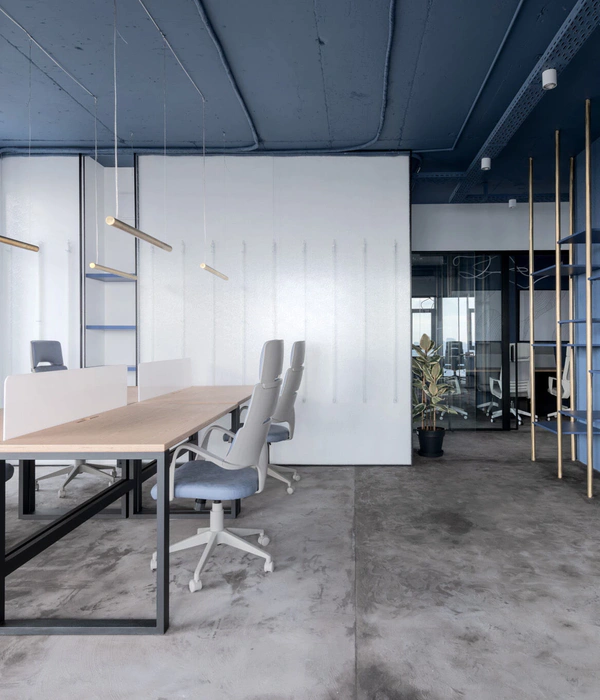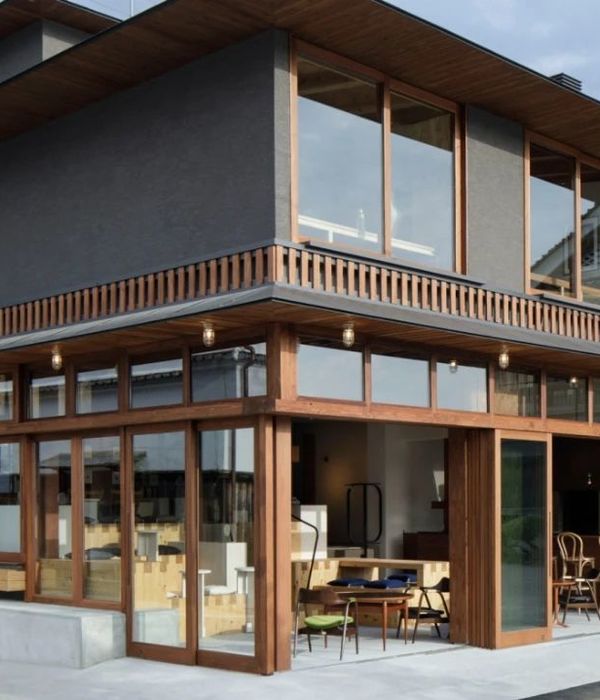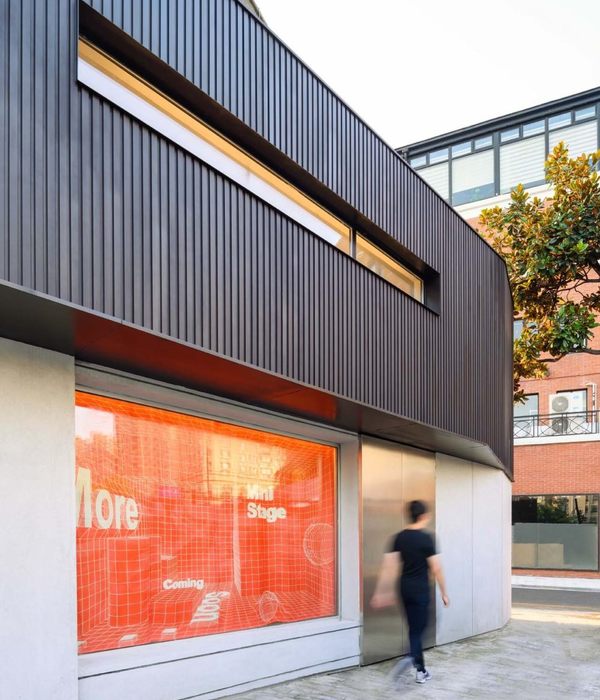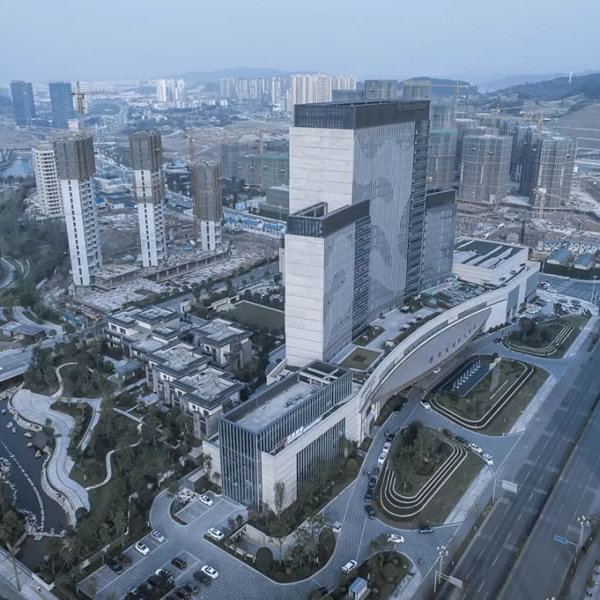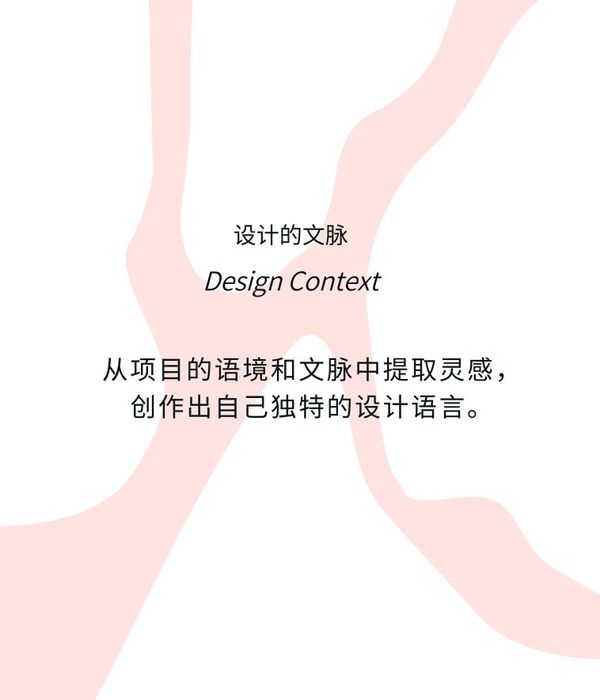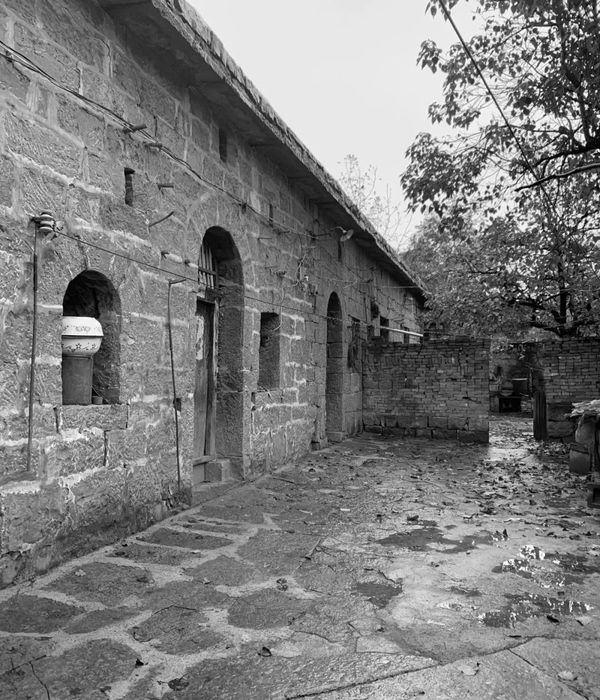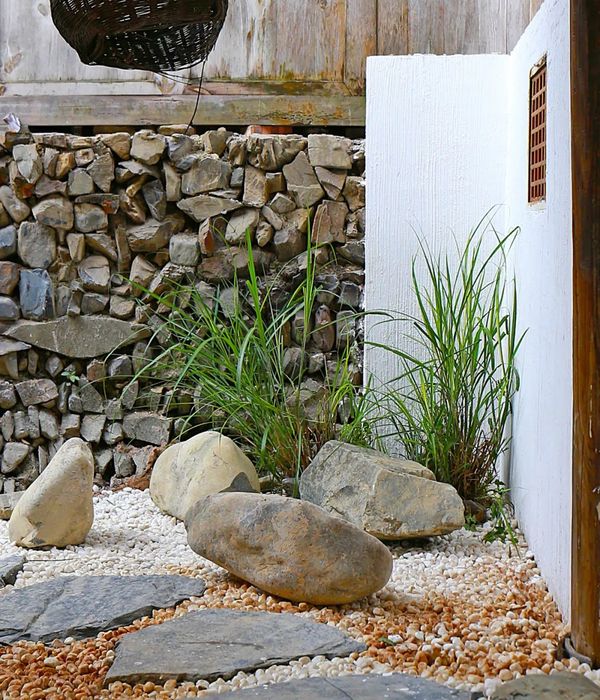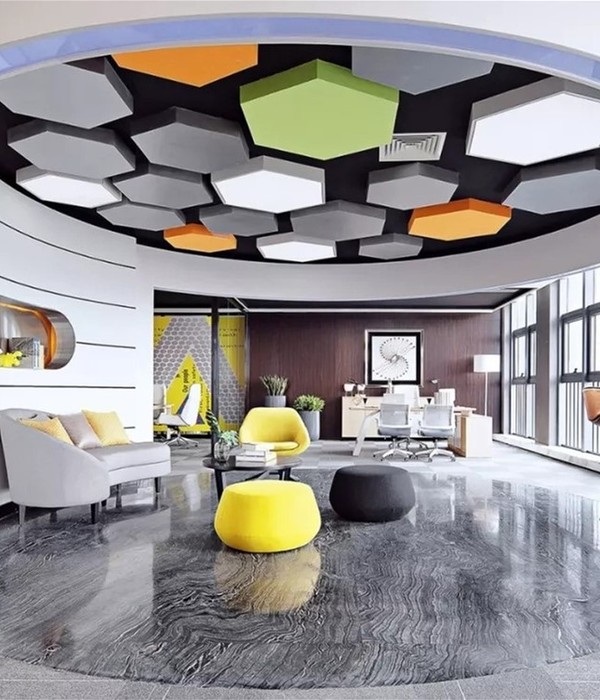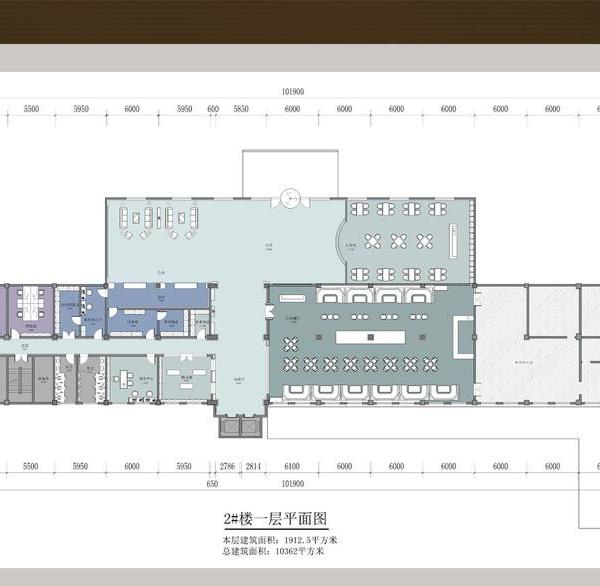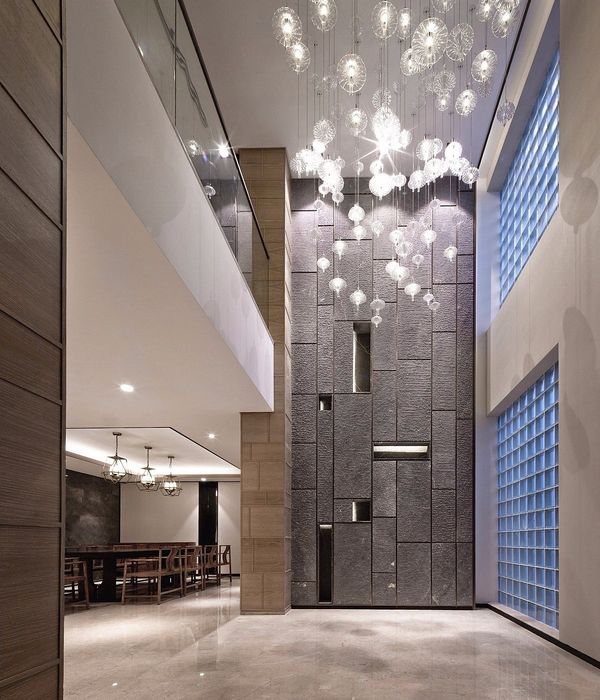- 项目名称:舟山海街11号民宿酒店
- 项目地址:舟山朱家尖樟州村
- 建筑&室内设计:MAT 超级建筑事务所
- 设计团队:唐康硕,张淼,王飞宇,张爽,方文静(实习)
- 结构形式:砖混结构,钢结构
- 建筑面积:790平方米
- 设计时间:2018.09-2019.07
- 建成时间:2019.07
- 摄影:唐康硕
2018年8月的某一天,一个朋友找到我们,说舟山朱家尖岛上的老家正在翻建房子,房子正对着大海,他们想做一个海边的民宿酒店。朋友夫妇俩都是电影人,很早就跟我们描述过海边渔村的宁静和向往的简单生活方式,村里只有几十户人家,过去每到夏天,他们就回到村里,拍拍片子、写写剧本,看着傍晚回来的渔船和远处海平面上星星点点的灯。
One day in August 2018, a friend came to us and said they wanted to build a beachside hotel, while their old house was under construction in Zhujiajian island, Zhoushan. The couple are both filmmakers, they fascinate in the peace and simple lifestyle of the fishing village in the old times, and always want to do something for their hometown.
▼正立面全景,main facade
回忆总是比现实美好,近两年开始,村里开始掀起了翻建房子的热潮, 我们第一次去项目现场的时候,看到满山遍野正在建设中的“欧式”大别墅,就如同在浙江其他城市近郊农村的光景完全一样。宁静的渔村已然成为一个大工地,热火朝天盖房子的同时也充满了焦躁和不安。
However, memories are always better than realities, the village is no longer a quiet place. When we first visiting the site, we found that the whole village was becoming a big construction site, each family wanted to build a “European Style” villa, which is the same as other countryside in Zhejiang Province. The fishing village was full of anxiety and uneasiness.
▼樟州湾渔港,the fishing port of Zhangzhou Bay
▼渔村变成了大工地,the fishing port turned to a construction site
项目基地在村子的最西北边,面对海湾和一片沙滩。我们接手的时候,三层建筑主体已经封顶,房子是砖混结构,东北侧朝向大海,南侧面对山和通往村镇的道路。建筑的东西两侧的邻居家也在同步进行住宅翻建,建筑之间都只留出两米的通道,非常紧凑。设计任务是在这样的条件下做出一个有12间客房的民宿酒店。设计之初,面对充斥渔村的“欧式”建筑立面符号语言的压迫,我们本能地开始抵抗,并希望能够在建筑学的语境中寻找方法,以此来挣脱渔村的时空撕裂感,带来另一种在地的建筑可能性。
The site is right at the north-west part of the village, facing the bay and a sandy beach. The main structure of this four-story building was almost finished when we began to start the design process, neighbours on both side were under construction at the same time, with a intensive distance of 2 meters from each other. The assignment is to design a 12-room mini hotel with this circumstance. Confronting the overwhelming “European Style” facade language which was fullfilling in the fishing village, we started with resistance instinctively, and turned to find an alternative way within the context of architecture, so as to bring another possibility of the site-specific residential building.
▼场地面对着大海和沙滩,the site is facing the beach and the sea
曾经在西南欧漫长海岸线上的旅行经历或许能够给我们带来一些启发,让我们从狭隘的形式语言和狂热的消费世界中获得救赎。柯布西耶曾经这样形容卡普里岛的房子:“一座岩石的延续、一丛岛屿的分支,如同建筑地衣从卡普里岛的土地中生长出来,成为凝视自然的工具”。在那些由石灰岩和花岗岩建筑构成的坚固的村落,生长于海边山坡上,与大地紧密相连,既有常年抵抗海风的粗粝性格,又有很强的在地性。舟山的诸多海岛上,渔村的建筑形态也经历了几次演变:最早期的村落一般在背风的山岙里,建筑多由花岗岩和块石砌筑而成的单层坡顶石头房;第二阶段的翻建后大多是有二层外廊的砖瓦小楼,建筑多为砖混结构,楼板和阳台普遍采用水泥预制板;近年的第三阶段的翻建使房子层数又一次加大,同时,由大规模工业化生产带来的廉价而庸俗的“欧式符号”装饰元素彻底成为了主导建筑形式语言,并舍弃了阳台、露台等日常生活中非常重要的功能空间。
▼舟山民居演变,the
evolution of the residence in Zhoushan
▼第二、三代渔村民居照片,the residence from the 2nd and third generation
The experience of traveling on the long coastline of south-west Europe may provide us some inspiration to redeem ourselves from the narrow formal language and a frenetic consumer world. Le Corbusier once described the house on Capri as “A continuation of rock, a branch of island, buildings growing like lichen from the land of Capri and becoming a tool for gazing into the nature”. Those sturdy villages, made up with granite and limestone, grown on the hillside of the sea, and closely connected to the earth, have a rough character as well as a site-specific identity. On many Zhoushan islands, the building type in the fishing village has already experienced several evolutions: from the earliest single-story stone house to the prefabricated concrete building with an external balcony on the second floor, until the recent reconstructions, the cheap and vulgar “Euro-style” facade decoration brought by mass-production has become the dominate building style language, with the completely abandon of necessary functional space such as balcony, terrace and so on.
▼立面设计概念,facade design concept
▼立面和入口透视,entrance perspective
我们决定采用去装饰化的方式,通过建筑自身的元素定义空间形态。改造前的住宅平面布局希望能够有尽可能多的使用面积而忽略了建筑空间与海的互动关系。于是在朝向大海的一侧,我们植入了“阳台”元素对原有建筑格局进行干预,产生了一个新的看海界面。新加的阳台不但丰富了建筑面对自然过渡的空间层次,也形成了“框景”的效果。
We decided to find a way to define spatial patterns by the building element itself, instead of the decorative facade. The former floor plan layout required more usage area but ignored the interaction between building space and the sea. So we intervene the original structure by bringing “balcony” element, resulting a new sea-viewing interface.
▼入口局部,entrance partial view
受建筑师伍重在马略卡岛自宅的启发,这种有限定性的“框景”使得从每个房间看出去,都可以得到属于自己的那一片不同的海景。相比于那些格外开阔的海景视野,这种处理方式却反而提供了一种更加强烈的途径,让人们可以自内而外的去感知建筑外的世界。当房间的主角是一个为你提供观看外部世界的“框”的时候,你发现大海和那些岛屿会愈发清晰、甚至充满张力的呈现在你的面前。另外一方面,“框景”也为房间里的人很好地回避了当今的渔村乱象,从而更加专注眼前这一片海带来的宁静。
▼海景一侧互动界面,the interface facing the sea
With the inspiration of Can Lis from the great architect Jorn Utzon, the added-balcony not only enrich the spatial layer from the interior to the seaside, but also form a “frame view” from the inside-out, which could benefit each room for its unique seaside view. Rather, this approach provides a more intense way for people to perceive the world outside the building from the inside-out than the extra-open view of the sea. For the people in the room, “frame view” is also able to avoid today’s chaos in the fishing village, and also helps people more focuse on the sea in front of the tranquillity.
▼从早餐区看院子,view to the courtyard from the breakfast area
▼窗景,the framed scenery
在南侧朝向山和道路的一侧,阳台功能的加入带来了跌落错动的建筑形体,与山呼应,简洁有力,同时对从村镇前来的人们来说也增加了可辨识度。我们希望改造后的建筑在表层的粗粝中带着柔软的性格,就像海边礁石上长出的花,坚韧不拔。我们也试图寻找在剥离了庸俗的装饰符号之后可能产生的朴素的建筑特征:它是功能性的和在地性的;也是文学的和生活方式的。我们希望这种朴素的建筑语言,能够让渔村乡邻看到在流行的“欧式”立面之外的建筑可能性,从而让向海而生的人们在建造宅院的时候能将生活方式作为首要考量因素,而不仅仅是通过跟风庸俗的装饰符号来寻求自我的身份认同。
▼山景一侧互动界面,the interface facing the mountain
On the south side towards the mountain and the way-out the village, the added-balcony brings a stacking form, simply and powerful, which is also indicating the mountain shape. We hope to give the building a soft character with a roughness surface, like the flowers growing on the seaside reefs. We are also trying to find the simple building features after stripping away its vulgar decorative symbols, it could be functional and site-specific, it might also be literary and lifestyle. We hope to provide the local people the other possibility with these simple facade language, instead of the symbolic “Euro-style” decoration, so that people who live by the sea could able to build houses with the primary consideration of their own lifestyle, rather than defining the self-identity by blindly following the symbolic building facade.
▼三层客厅,living room on the second floor
过去,在渔村里的大树下,总是聚集着一拨拨亲戚邻里在拉着家常。我们希望在设计中将这种生活方式在新的场所里保留下来。原有场地的高差在设计中得以保留,并用以路径引导的方式定义出在运动中的连续景观体验:从场地西北侧较低处的院子入口的大树旁,背对着大海进门,沿着西侧高大的围墙拾阶而上,径直进入室内或者侧身走进大树荫庇的观海平台,在树影的摇曳里静静坐下来。观海平台借由场地里原有的五棵朴树而形成。这是伴随着孩童长大,并且经历了数次台风,却仍能在海边沙地上顽强生长的树木,因此尤为珍贵。
People living in the village often gathered under the trees in the past, we hope to maintain this traditional living activity in the new place. The height difference on the original site is preserved, and the new design creates a continuous landscape experience by guiding movement from the seaside to the front door. The path starts under the tree shadow at the north-west corner: you turn back to the sea, enter the front gate, go up the steps alongside the wall until the sea-view platform.
▼正立面和院子,the front facade and the yard
▼院子和朴树,the yard with greenery
在面向大海的方向,建筑入口延伸至树的边界,形成折线形退让开阔的场地,场地上以不同的材质层层区分宛如海浪潮水,在大树的荫庇下形成天然的休憩场所。 大树下的平台上,从小在渔村里长大的主人邀约着村里的乡邻和路过的旅人到此喝茶看海,是童时记忆,也为反哺故里。
The platform is built with the five trees originally on site, as an extension from the internal floor to the sea, forming a fold-shaped retreat to the open field. Three different materials is applied to this geometric platform in order to form a wave-like pattern, and connect the wooden floor to the sand beach. On the platform under the five trees, the master grown up in the village would invite neighbors and passers-by to come and have a drink, it is a childhood memory, and also for the back-feeding of hometown.
▼庭院景观和海,view to the sea from the yard
▼景观和海鸟瞰,aerial view
作为一个度假居住场所,其内部公共空间处理也是设计的重点。在建筑中,我们设置了两个不同高度与景观互动的公共空间:面向大海一侧的是与观海平台连接的首层大厅,作为餐厅、接待和休闲区功能;以及四层面山的空中客厅,作为四层客房和阁楼房间的公共起居室使用。
As a resort space, the design also paid more attention on the interior public space. We set two public space in different levels, with the sight view of sea and mountain. For the sea side, it is the main living and dining space on the ground floor, providing reception and leisure functions; while the sky living room which is facing to the mountain on the fourth floor, is used as the sharing living space for the upper level rooms and attic room.
▼首层大厅,lobby
原有建筑的首层大厅层高受限而且柱子较多,因此设计中通过黄和白两种色调对比分区来营造空间:周围的黄色区域作为入口、餐厅和茶吧功能;被黄色包裹的中央白色区域作为客厅和前台功能使用。白色区域的梁柱露明,并通过室内照明将顶棚照亮,烘托出建筑结构的自身张力,这种处理方式同时也增加了原本低矮的空间的舒适度。为了能够在大厅里得到更好的观赏视线,我们在面对大海的一侧设计了四扇玻璃推拉门,在凉爽的季节,可以把门完全打开,让首层大厅和观海平台融为一体。
The original ground floor has lots of columns and a very limited height, so we introduce two colors to create the space, by contrasting partitions in yellow and white. The surrounding yellow part is used as front door, dining space and tea bar, while the central white part, which is wrapped by the yellow, is used as reception and leisure space. We deliberately exposed the beams and columns in the white part, and illuminated them by indoor lighting, so as to show the tension of the building structure themselves, and it is also good for increasing the comfort in the low height space. We also design a four-glass sliding door, which can be completely open, allowing the integration of the interior space and the exterior sea-viewing platform.
▼入口关系,view to the lobby from the entrance
▼从大厅洞口看早餐区,view to the breakfast area
由于乡村建造技术的限制,原有建筑中产生了小柱跨的密柱空间,对空间划分不利。然而逆向思维告诉我们,暴露现状结构和借由材料对比,可以借用建筑元素本身营造出一种抽象的体验。它仍然是简洁、朴素的,并且时刻让人们关注远方的海面和岛屿。在这里,客人们可以静静地待上一整天,感受在密柱空间的纪念性和临海起居空间的日常性之间不停转换的体验。
▼首层大厅分析图,lobby diagram
Limited by the rural construction technology, there are many dense column space in the building, however, it also helps to create an abstract experience with the building elements themselves, for example, by exposing structure and contrasting with different materials. The space is ought to be simple, and make others focusing on the sea and the dispearing horizon . One can also spend a whole day quietly in this space, willing to catch the experience shifting between the monumentality brought by dense pillars and the everyday nature of the seaside life.
▼大厅密柱空间,the column system
海街11号民宿酒店改造项目,自设计到施工持续近一年。由于当地管理政策的变化和繁杂的邻里关系,设计落地过程相当不易。项目落成时,每天都能看到路过的乡邻和游客们好奇地张望打量,询问点评。这更加坚定了我们希望能够借助朴素的语言和建筑元素本身来探索渔村下一代建筑可能性的信心,并希望能够借助这种建筑和空间形式带给人们新的空间认知,发展在地性的生活方式。
The Summer Hotel renovation project lasted nearly one year from design to completion. It is a very difficult time during the construction process, due to the ambiguous local management policy and the complicated neighbourhood relationships. Once after it realized, every day you can see that passing neighbors and tourists curiously look out for questions. This also gives us more confidence of discovering the next generation building in the fishing village, with the concept of architectural elements and simple building language. And we also hope the building character and the functional space will bring people new spatial awareness of architecture and help to develop a local daily life.
▼楼梯和走廊空间,stair and corridor
▼客房内部,guest room interior view
▼阳台景观,balcony view
▼夜间立面全景,facade view by night
▼项目模型,project model
▼场地平面图,site plan
▼首层平面图,ground floor plan
▼立面图,elevation
▼剖面图,section
项目名称:舟山海街11号民宿酒店
项目地址:舟山朱家尖樟州村
建筑&室内设计:MAT 超级建筑事务所
设计团队:唐康硕,张淼,王飞宇,张爽,方文静(实习)
结构形式:砖混结构,钢结构
建筑面积:790平方米
设计时间:2018.09-2019.07
建成时间:2019.07
摄影:唐康硕
Project: Zhoushan Summer Hotel
Location: Zhujiajian Island, Zhoushan, Zhejiang Province
Architecture & Interior Design: MAT Office
Design Team: TANG Kangshuo, ZHANG Miao, WANG Feiyu, ZHANG Shuang, FANG Wenjing(Intern)
Built area: 790m2
Completion: 2019.07
Photographer: TANG Kangshuo
{{item.text_origin}}

